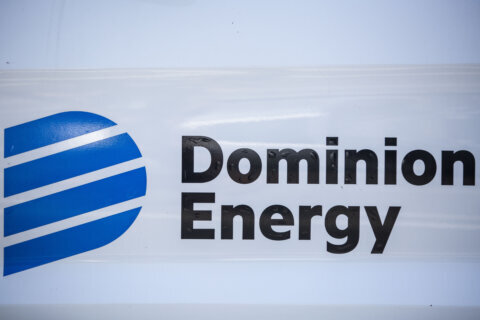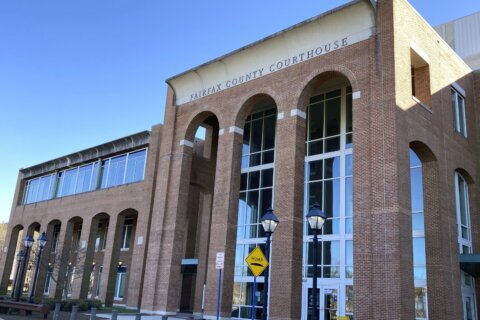This article was republished with permission from WTOP’s news partner InsideNoVa.com. Sign up for InsideNoVa.com’s free email subscription today.
This article was written by WTOP’s news partner InsideNoVa.com and republished with permission. Sign up for InsideNoVa.com’s free email subscription today.
The Northern Virginia Transportation Authority is looking for feedback from the public on its long-range TransAction plan, which is supposed to guide the region’s transportation project priorities through 2045.
Featuring an estimated $75.7 billion in potential projects, TransAction is different from the NVTA’s six-year program, serving instead as a long-term plan for what projects the authority and localities should undertake to improve regional transportation.
While the six-year program is updated every two years with funding for specific projects, TransAction is updated only every five years and comes with no funding. But to ever receive money through the six-year program, a project must first be included in TransAction, making the plan a big deal for the prospects of any individual project.
Among the notable Prince William County-located projects included in the latest draft update are “high capacity transit” extending south from Franconia/Springfield to Potomac Mills or Triangle/Quantico, such as what was studied in 2020 by the Virginia Department of Rail and Public Transportation.
Beyond that project – which, should it materialize as a bus rapid transit line or a Metrorail extension, will require years more study before funding can be lined up – 69 of the 81 included projects located in Prince William, Manassas and Manassas Park are primarily focused on roadway, intersection or traffic signal upgrades intended to improve personal automobile travel time.
Only two of 81 included projects feature a primary focus on bicycle/pedestrian mobility, though one of the roadway-focused projects has bike-ped listed as the “secondary mode type” and three feature transit-related improvements.
The biggest-ticket projects included in the plan are:
- The “high capacity transit” line on the U.S. 1/Interstate 95 corridor
- Widening Route 28 to six lanes from the city of Manassas to Fairfax County at an estimated cost of $500 million
- Widening southbound I-95 to four lanes from the Occoquan River Bridge and Route 234 ($486 million)
- Widening Dumfries Road to six lanes from Brentsville Road to Country Club Drive ($408 million)
- Widening Prince William Parkway to six lanes from I-66 to Brentsville Road ($358 million).
Many of the 81 projects are holdovers from the last update to TransAction five years ago, and the NVTA admits that the estimated costs of all the projects included in the draft plan exceed what the authority expects to have available for project funding through 2045.
The costs are projections, and the projects are not being funded just because they are included in the plan. Additionally, expensive projects are not necessarily more likely to ultimately be funded through the six-year program than others. That depends on how the projects ultimately fare in the NVTA’s scoring system and whether they are submitted for funding by the sponsoring authority or locality. The scoring focuses first and foremost on congestion mitigation, regardless of mode.
Across all of Northern Virginia, the plan includes 191 road projects, 104 transit projects, 54 intersection/interchange projects and 51 “non-motorized” projects for pedestrians and cyclists, though authority officials often point out that some of the road projects come with additional benefits for those on bicycles and those on foot.
The plan’s focus on roads and intersections, not just in the Prince William region, has already drawn criticism from some who say the region’s roadways will only remain clogged with carbon-emitting vehicles as population grows unless it eschews further road expansions for a focus on higher-capacity trains and buses and other alternative travel modes.
Critics also say that even if a road widening comes with an additional shared-use path, the wider the roads, the harder and possibly more dangerous they are for cyclists and pedestrians to navigate.
But authority leaders have said that they are focused on a multi-modal approach to improving the region’s transportation network. The NVTA also has a mandate to focus on congestion mitigation from the General Assembly.
In a news release, NVTA officials described the plan’s “goals to enhance mobility, increase accessibility and improve resiliency by planning for an equitable, sustainable and safe multimodal transportation network. The draft TransAction Plan, which is updated every five years, addresses regional transportation needs through 2045, by which the population in Northern Virginia is projected to grow by 23% and employment by 33%.”
NVTA Chair Phyllis Randall, who serves as the chair of the Loudoun County Board of Supervisors, told InsideNoVa that while asking the General Assembly to include more about sustainable, multimodal transportation in the authority’s charter could help in some ways, she was skeptical that representatives in Richmond could tweak the regional body without taking money from its funding, as they’ve done before.
“I am very hesitant to open up the … legislation because my fear would be that, as happened in 2018,” she said. “People in the General Assembly, our legislators down there, might look at the money in the NVTA and say ‘Oh gosh, look at all that money sitting there, maybe we can have a little bit more of that.’”
The final plan will be adopted this fall.







